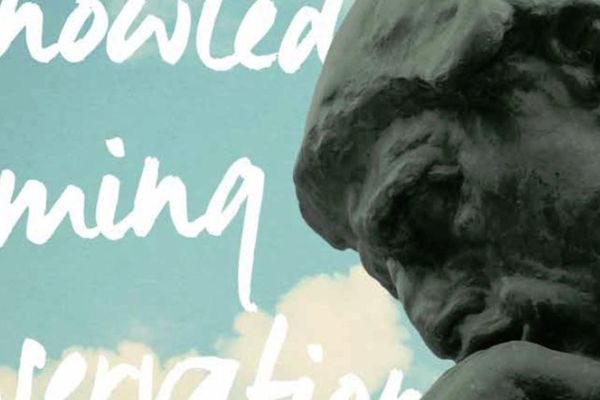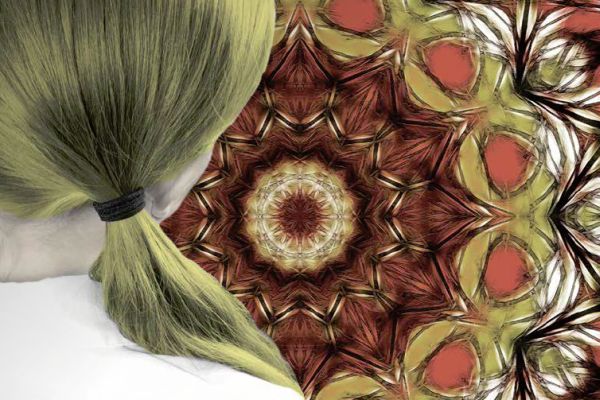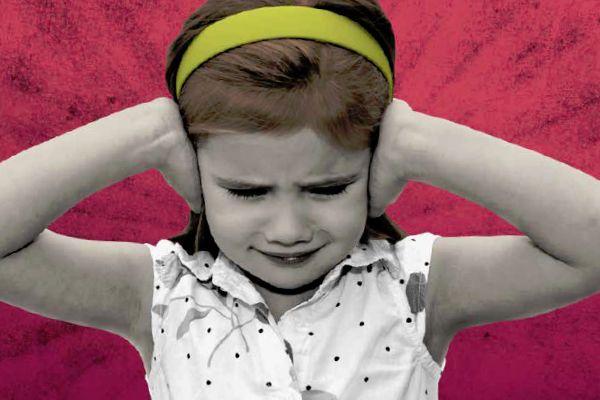My groupwork with metaphor and therapeutic story is called ‘Adventure Tales’, and while I am describing it here, I will refer to the child as he and the counsellor and helper as she, for the sake of clarity. I decided to write this article after reading two recent articles in this journal that seemed to be a lead-in to what I was doing. I’ll explain why.
The act of a child creating his own story seems to me to link closely with the process described in the article, ‘I’ve got a red beast in me, I know it’, by Leigh Burrows.1 This account was, for me, both moving and interesting. Burrows relates how the telling of the story The Red Beast to a group of children resonates with the children, and how they themselves use the analogy of the red beast later to help them make sense of one child’s actions.
A second article in the same issue (‘Of marbles and diamonds – writing stories that help’ by Camille Gibbs2) also explains how listening to stories can help children make sense of their troubles. Gibbs writes her own stories to ensure they are really tailored to an individual child’s needs.
I believe that my Adventure Tales groupwork offers a natural progression to this by creating the space for a child to create their own story. Adventure Tales allow children to express their emotions and concerns, while enabling resolution, reparation and restoration for them all. The concept of working in metaphor, one step away from their troubles, is used while working with the children’s raw emotions from real life. I have found that any restoration of these emotions stays with them when the children leave the metaphor and return to real life.
Safety in metaphor
During ten weekly sessions, four children enjoy creating a unique, thought-provoking Adventure Tale together. For them, it is exactly that – a tale or story. However, when it is viewed therapeutically, the tale can be seen as a metaphor for the children’s internal journey. Unconsciously, the children bring their real-life troubles into the adventure, disguised as monsters, dragons, deserts, volcanoes etc. There is no end to the inventiveness of the unconscious. Safely contained within the Adventure Tale, the children successfully overcome these adversities. They try out a new way of being, experience new, possible futures, find courage and skills within themselves – and all of it transfers to real life.
Because Adventure Tales work entirely in metaphor, the children are enabled to share and resolve feelings that may have been unacknowledged, unbearable, suppressed or acted out. These feelings seriously undermine children’s happiness and ability to function fully in their life, and so they form, as we know, behaviours that are adverse to their wellbeing, such as withdrawal, aggression and sadness.
However, precisely because the work is in metaphor, the children are not revealing any ‘secrets’, so they feel less vulnerable in front of peers. Confidentiality of any personal information given by the children is maintained – although, within metaphor, confidentiality issues rarely arise for the children and trust is able to be built rapidly within the group. Nevertheless, the children are asked to be respectful both in and outside the group of any knowledge they may have gained about each other.
Genesis
The seeds for Adventure Tales were sown many years ago as I made my own journey in writing stories with children. As a parent and as a primary school teacher with responsibility for literacy, I loved reading stories with children and inspiring them to be creative in writing their own stories. After thirty years of such interactions, I retrained as a counsellor and started to work in 2001 with individual troubled children in schools. Although I used my psychodynamic training as a baseline, the exigencies of working with young children meant I soon worked as an integrative counsellor. I continued my interest in story and discovered that the use and benefits of storytelling with children were well documented. Nick Owen lists, in The Magic of Metaphor, fifty-eight ways that story can appeal and connect with children (and adults).3 Joyce Mills was a charismatic speaker and wonderful eye-opener as regards the power of story.4
But Adventure Tales started only after I read in 2004 about Gill Morton’s work on therapeutic storytelling with groups of children.5 She wrote about a way of allowing children to write their own stories while being supported by a counsellor. I was intrigued and inspired to try it for myself.
My main place of counselling work at the time was in a middle school that had a head teacher who was very supportive of therapeutic intervention for children. I started my first storytelling group in 2005 and have run termly groups in a variety of schools ever since, adapting and developing Adventure Tales in a progression based on Gill Morton’s original concept that had so inspired me.
How it works
Adventure Tales groupwork supports troubled, unhappy children aged between about seven and twelve years – children who are troubled but not in crisis. Their concerns include anything that walks through a child counsellor’s door. Almost all troubled children thrive in Adventure Tales, and always work in groups of four. The children are chosen by the school, and experience has shown that what works well is a mix of two boys and two girls, or all girls or all boys; a mix of presenting behaviours; and an age range of only one or two school years.
With some trepidation, I have also run an Adventure Tales group with children aged three to six years old – and happily discovered that even the nursery child was enabled to talk and draw to express their troubled emotions that had arisen from events at the preverbal stage, and gain restoration. My supervisor has successfully run groups comprised of parents. However, experience has shown that children with Asperger’s or who are on the autistic spectrum are usually best not chosen, as they tend to neither benefit from, nor enjoy, Adventure Tales. Also unsuitable are children in crisis, who will need one-to-one counselling support. Children in a special school will often need more time, and the group could usefully work over two or three terms.
Together, then, the four children create and illustrate an adventure about an ‘exploration into the unknown land’. The children are the explorers. As captain, I keep the explorers safe and bring them safely home. There is a second captain (such as a teaching assistant, SENCO or other suitable adult) playing the part of the recorder. The recorder’s task is to make brief notes, not only of the children’s words but also of discussions, dilemmas and solutions. The children are then freed from worry about the mechanics of writing, and this helps release their creativity. They draw anything they choose from their tale.
At the start of each session, the explorers are given a very brief, deliberately vague scenario, such as ‘there is a shadow circling in the mist’ or ‘a Being is trapped in the cellar’. The scenario provides a focus to each week, enabling the children to immediately start their therapeutic journey, using the all-too-short hour to best advantage. The children offer their ideas, fears and solutions, which are acknowledged and encouraged by the captains. The children’s ideas are accepted non-judgmentally so that the children feel valued and listened to.
Safe containment is important in order to hold the reflective, creative space for the Adventure Tale to emerge. So the same practical routines are followed each session for any one group: the equipment is provided; the previous week’s chapter read out loud; the scenario given; the action and resolution decided by the children, such as the sharks are killed/befriended/sent away; their drawings done.
Once the children have given their ideas, I believe that – as captain – I have the responsibility to sometimes sensitively and respectfully offer further suggestions to widen the scope of the children’s thinking so that they can consider different ways of being and different consequences, and hear a different viewpoint from that experienced before. This increases their choices of how to behave and react. Maybe they could help/befriend the monster? Or they may still choose to capture/kill it – this often happens.
At the same time, as captains, we stimulate thinking about consequences, such as when fighting a dragon alone, to help them realise that they are responsible for the results of their choices. Learning this skill helps to protect impulsive or risk-taking children and enables children to take responsibility for their actions. If a child wants to go alone, unprotected into a jungle, we discuss ideas for a ‘safety net’ to make the action safe, so the child experiences being protected and cared for. They are also being shown how to look after themselves, which is important for a child who may not be protected at home.
Most importantly, we listen to and accept non-judgmentally all safe choices the children make in the adventure – their bizarre sliding entrance to the cellar, their ice-melting machine etc. So they feel in control of this part of their lives; lives that have often left them powerless.
At the end of each session, the children illustrate the tale with anything from that session that they choose, creating a pictorial record of their journey that mirrors the therapeutic process. And after each session, using the recorder’s notes as an aide-mémoire, I write up the Adventure Tale using the children’s words, including the therapeutic insights experienced. So a new chapter is created each week and the tale develops.
The Adventure Tale print-out of the previous session’s chapter is given to each child at the start of the next session to read aloud – their words denoted in individual colours. They experience the joy of reading their own words, while therapeutic insights are reinforced.
The children not only find adult support in the group but also experience and learn to give peer support. They feel appreciated and valued by both peers and adults and they have witnesses to their successes and achievements. They love coming to the group, benefitting on many profound levels: therapeutically, socially and educationally.
Evaluation
Evaluation of Adventure Tales has consistently shown that teachers and parents all observe the restorative effect as the children show a better balance of feelings and actions. A bonus is that Adventure Tales groups are cost-effective in a primary school: four children for ten weeks, each session costing a group counselling fee plus the cost of one hour of the recorder’s time. There is help and support for starting such a group in my recent book,6 which offers a concise, practical guide, so that you don’t have to reinvent the wheel, and includes the inevitable admin forms linked to any work with children. It is, though, merely a springboard for your own journey, to be adapted to suit the children and your individual counselling skills. Most importantly, the framework gives a safe and consistent space in which the children freely and creatively work via metaphor to find restoration from their troubles.
I must reiterate finally that my work with Adventure Tales owes a huge debt of thanks to Gill Morton. As I mentioned, she was my initial inspiration for the concept and over the last ten years I have adapted and developed her idea of storytelling in my own way and in my own workplaces, in a natural progression. But many of the core ideas remain Gill’s and I am most grateful to her on behalf of all the children I have worked with and helped by using those ideas.
Barr Kazer (BACP Accred) has worked as a school counsellor for the last fifteen years, after many years’ primary school teaching. She started and ran counselling services in a middle and a secondary school, and from 2005 also ran weekly Adventure Tales in a variety of schools. Now semi-retired, she takes groups for The Open Toy Box, where she also offers training for counsellors in Adventure Tales, based on her book, Adventure Tales: a framework for therapeutic story creation by and for children (Speechmark, 2015).
More from BACP Children and Young People journal

What informs our interventions?
Open article: Carol Holliday discusses professional knowledge and how we develop it for working therapeutically with children and young people. BACP Children and Young People, December 2015

Trauma: The body, the play and the drama
Open article: Sue Jennings writes about the building blocks of trauma recovery. BACP Children and Young People, September 2015

Obsessional avoidance of everyday demands
Open article: Phil Christie introduces pathological demand avoidance (PDA), describes its symptoms in children and young people, and explains how therapists, teachers and parents can understand and work with it. BACP Children and Young People, June 2015
References
1 Burrows L. ‘I’ve got a red beast in me, I know it’. BACP Children & Young People 2015; June: 20–22.
2 Gibbs C. Of marbles and diamonds – writing stories that help. BACP Children & Young People 2015; June: 34–35.
3 Owen N. The magic of metaphor. Carmarthen: Crown House Publishing; 2001.
4 Mills JC. Reconnecting to the magic of life. Hawaii: Imaginal Press; 1999.
5 Morton G. Using group narrative with troubled children. Counselling and Psychotherapy Journal 2004; 15(01): 21–23.
6 Kazer B. Adventure tales: a framework for therapeutic story creation by and for children. London: Speechmark; 2015.
